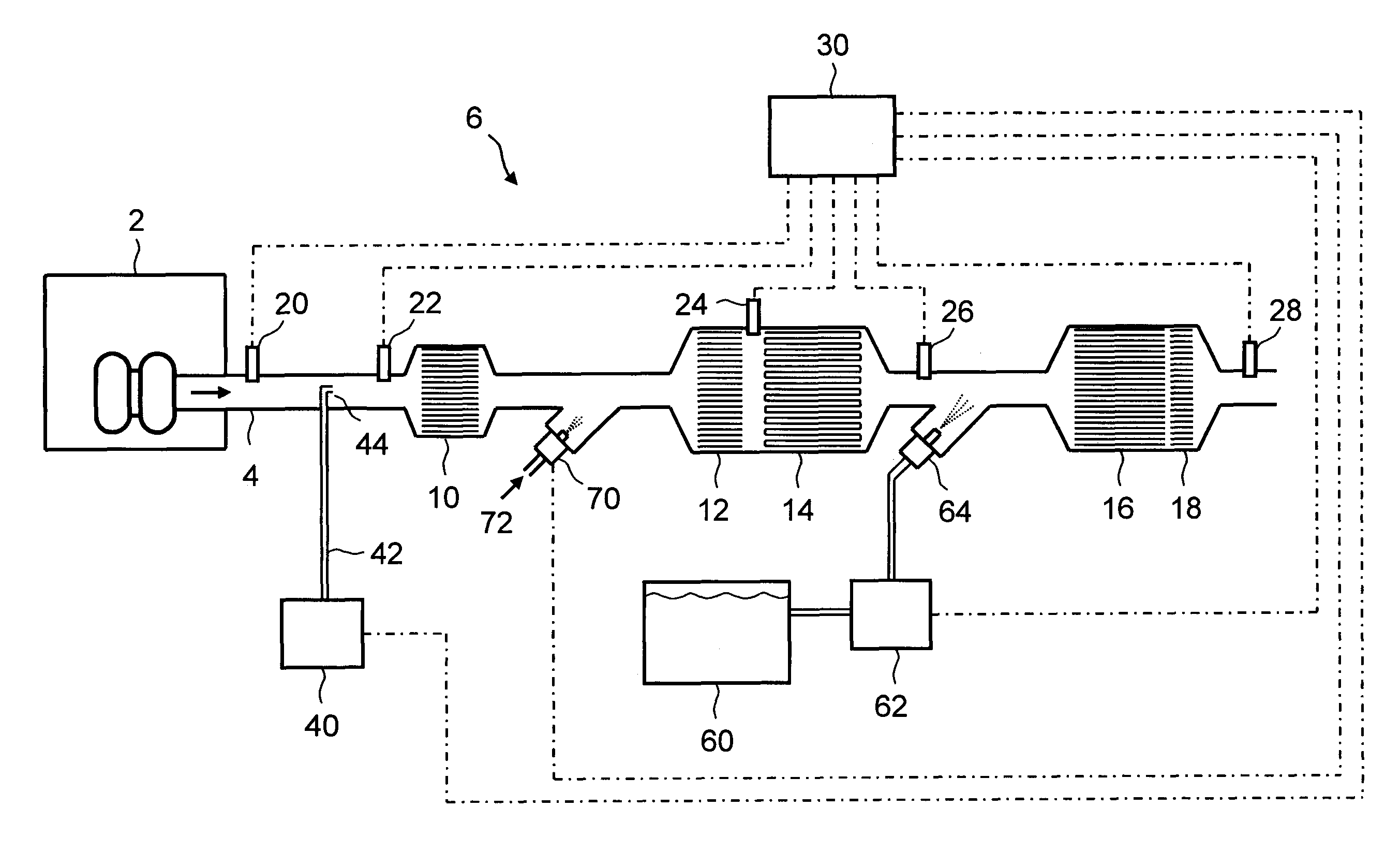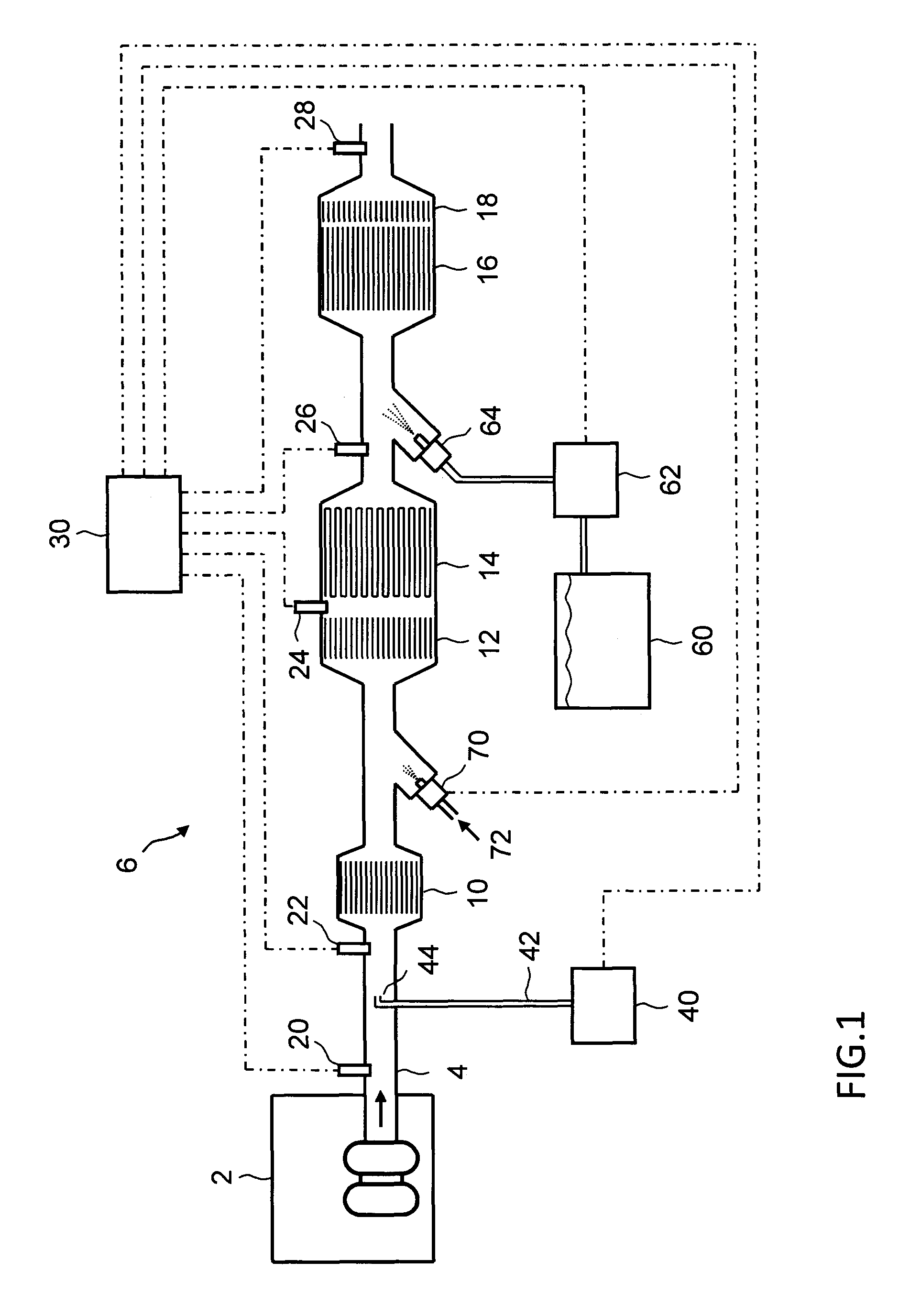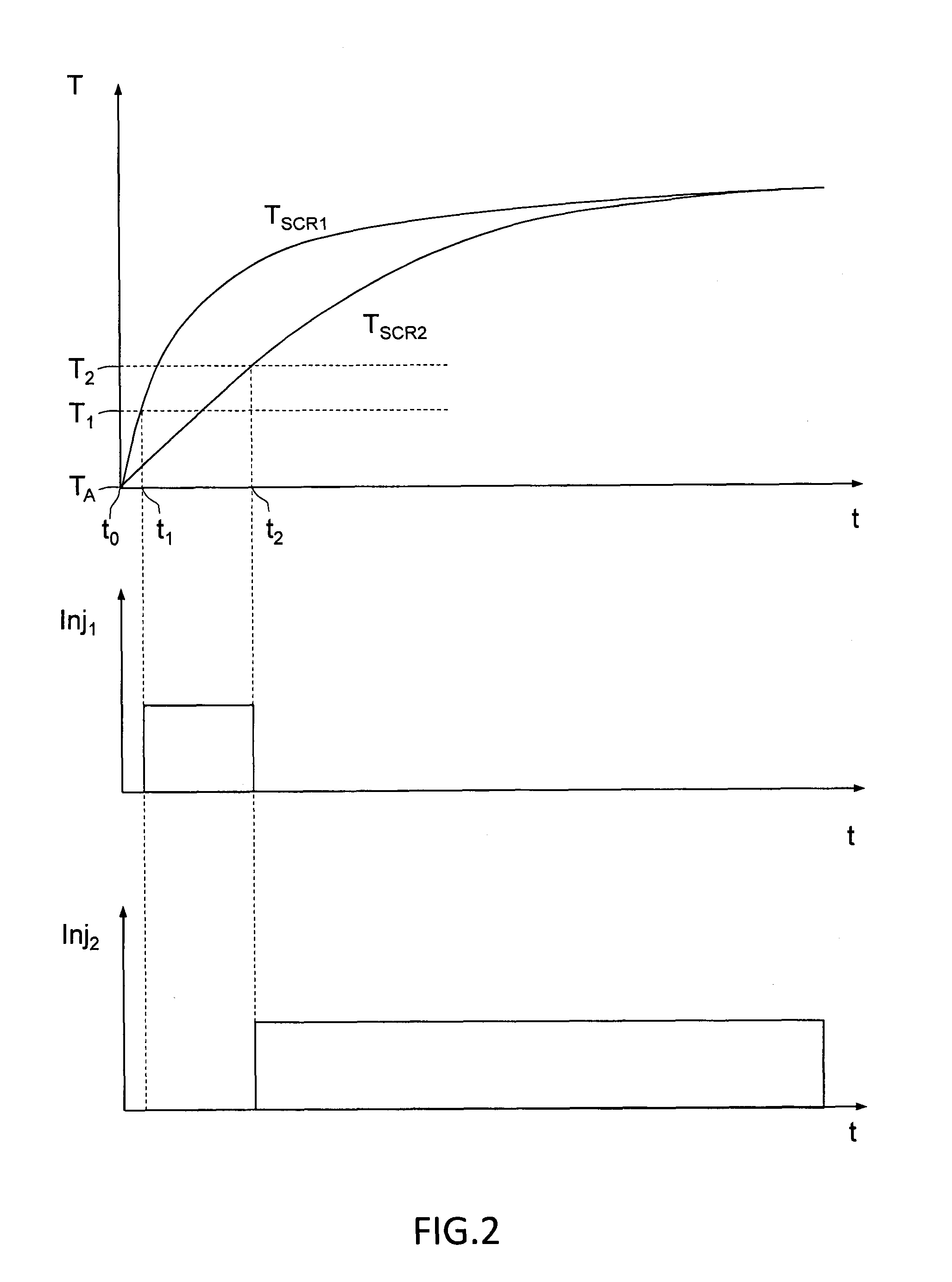Exhaust aftertreatment system and method for operating the system
a technology of exhaust aftertreatment and exhaust, which is applied in the direction of exhaust treatment electric control, machines/engines, separation processes, etc., can solve the problems of affecting the operation affecting the efficiency of the exhaust aftertreatment system, and a relatively short refill interval of the ammonia source, etc., to achieve rapid and economical control, rapid warm-up of the catalys
- Summary
- Abstract
- Description
- Claims
- Application Information
AI Technical Summary
Benefits of technology
Problems solved by technology
Method used
Image
Examples
Embodiment Construction
[0044]Various aspects of the invention will hereinafter be described in conjunction with the appended drawings provided to illustrate and not to limit the invention.
[0045]The use of selective catalytic reduction (SCR) for reducing NOx emissions is widespread within the automotive industry, with the most common technology using, urea (NH2CONH2) as a precursor to ammonia (NH3) for the catalytic removal of NOx emissions. The invention is not limited to urea as ammonia-containing reductant, and other reductant types currently used in SCR applications may alternatively be used, such as aqueous ammonia. The NOx abatement efficiency of an SCR catalyst has a two-fold temperature dependence, limiting the efficiency during low-temperature exhaust conditions. The reaction rates of the catalytic reactions for NOx removal are dependent on temperature, with an active temperature window generally starting at a catalyst temperature of e.g. 150° C., depending also on the NO:NO2 ratio of the feedgas ...
PUM
 Login to View More
Login to View More Abstract
Description
Claims
Application Information
 Login to View More
Login to View More - R&D
- Intellectual Property
- Life Sciences
- Materials
- Tech Scout
- Unparalleled Data Quality
- Higher Quality Content
- 60% Fewer Hallucinations
Browse by: Latest US Patents, China's latest patents, Technical Efficacy Thesaurus, Application Domain, Technology Topic, Popular Technical Reports.
© 2025 PatSnap. All rights reserved.Legal|Privacy policy|Modern Slavery Act Transparency Statement|Sitemap|About US| Contact US: help@patsnap.com



